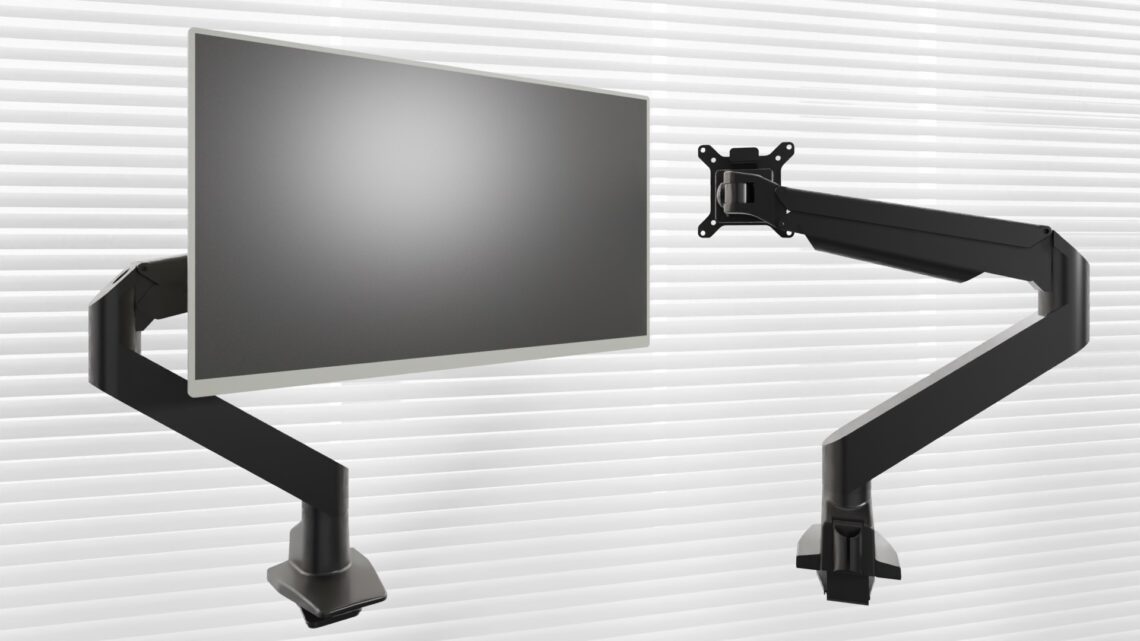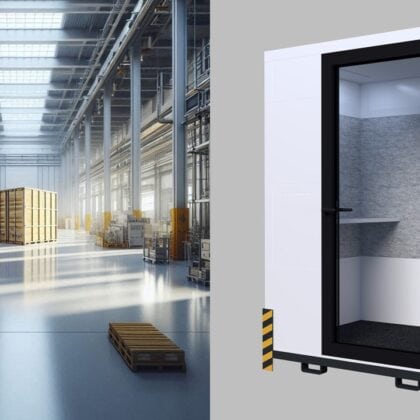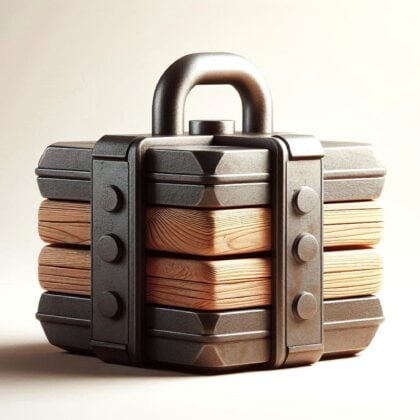The option of being able to install a monitor in the acoustic cube is a relevant point for many of our customers when deciding which box to consider. The good news is that a monitor mount is available as an accessory or optional extra for almost all acoustic cubes in our range!
A small note on our categorisation: Multiple categorisations are possible, i.e. a workbox that is available both with and without a monitor mount will appear in both categories.
Contents
Why is a monitor mount in the acoustic cube useful?
What applies at the desk also applies in telephone and meeting boxes: it is easier to work with an (external) monitor than on a laptop and video calls can also be conducted more professionally with a monitor. The latter is particularly true if the monitor has an integrated webcam. In this case, the image is transmitted from the ideal angle: the camera is positioned slightly above eye level and the angle is slightly downwards. This is much better and more visually appealing than using the laptop webcam, which is usually positioned below eye level and films faces from below.
What types of monitor mounts are available for acoustic cubes?
Depending on the structure and size of the acoustic cubes, two different types of monitor mounts can be considered:
- Wall bracket: With this type of monitor mount, the monitor is attached directly to the wall of an acoustic cube. There are either pre-drilled holes in the wall that can be used to screw the actual monitor mount to the wall. Alternatively, the monitor mount can be hooked into an existing rail system on the wall. Some manufacturers also use their own steel columns, which are attached to the floor or ceiling.
- Monitor arm with table clamp: In larger meeting cubes with a table, monitors are often clamped to the table top with the help of a monitor arm (similar to normal desks).
For monitor mounts, there is the so-called VESA standard, which ensures the compatibility of the mount and monitor. Almost all monitor manufacturers use the VESA standard for their monitors.
What is the VESA standard and what sizes are available with VESA?
The VESA standard was created as a standardised norm for attaching flat screens, LCDs, monitors and televisions to mounts. In principle, the VESA standard defines the distance between the four screws with which monitors can be attached to brackets. With many monitor models, the stand supplied is also attached to the actual monitor using VESA. If you don't see any VESA threads on the back of your monitor, you will usually find them when you unscrew the stand.
The four screws are usually arranged in a square, the number after "VESA" indicates the distance between the screws in millimetres, common VESA formats are:
- VESA 75 or VESA75x75: 7.5cm x 7.5cm (or 75mm x 75mm), suitable for very small monitors. Not very widely used.
- VESA 100 or VESA100x100: 10 cm x 10 cm, suitable for monitors weighing up to 14 kg. The most widely used format for normal monitors in everyday office use.
- VESA 200 or VESA200x20020cm x 20cm, suitable for monitors weighing up to approx. 22 kg
Commercially available computer monitors with display sizes between 24 and 27 inches usually allow wall mounting in the VESA75x75 or VESA100x100 format. The larger VESA formats are more commonly used for large TV monitors.
Questions, comments & personal advice
Are you missing any information or do you have any questions? Then please leave a comment below! You can also get free advice from us:




